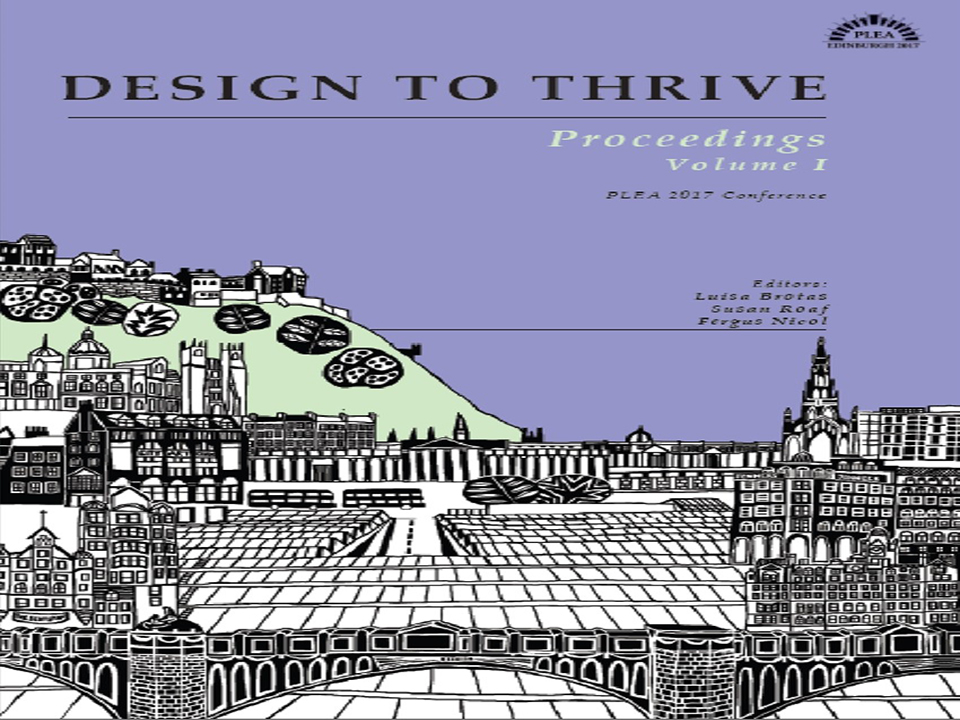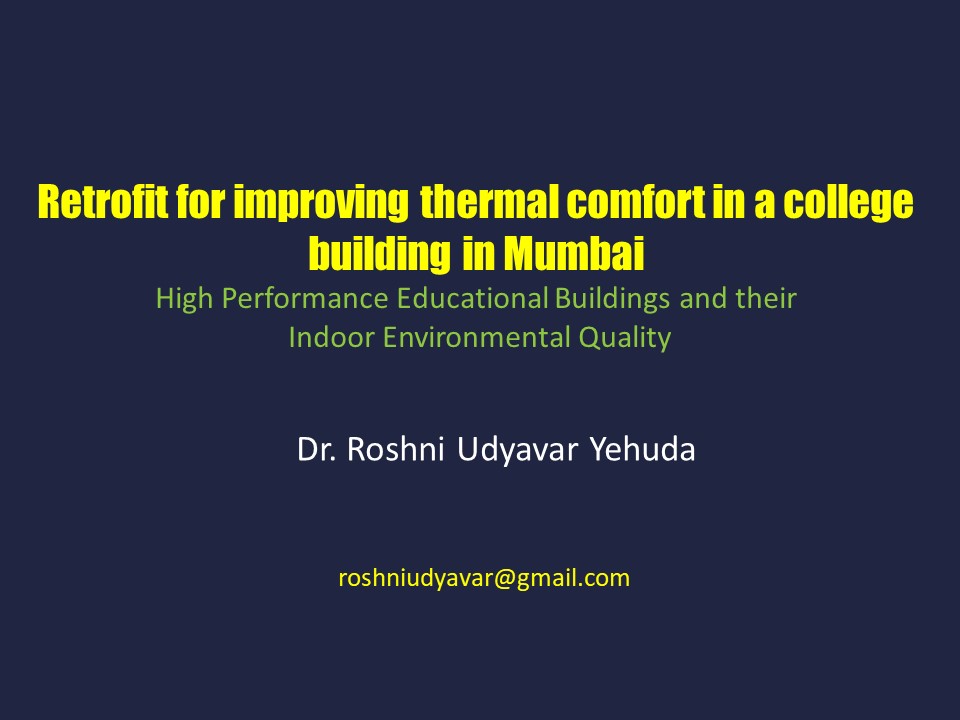Retrofit for Optimizing Building Thermal Performance in Warm-Humid Climate (July, 2017)
In existing educational buildings, spatial layout over time is altered to meet functional requirements. However, these can adversely affect the thermal comfort of occupants. Spatial and structural retrofit can improve thermal performance of buildings. This research puts forth the results of a real-life retrofit project to improve building envelope and interiors for better thermal performance of an existing educational space in warm and humid climate of Mumbai. The aim of the research is to analyze the effect of retrofit measures on building thermal performance. Measurements of air temperature, relative humidity and surface temperature of the sloping roof-the largest exposed envelope surface – were undertaken pre and post -retrofit using appropriate instrumentation. Key factors analyzed include change in roof under-deck surface temperature, surface area to volume ratio, change in U-factor and Envelope Performance Factor of building elements pre and post-retrofit. Results show a significant drop in internal surface temperature of the roof post retrofit, which has a positive effect on the MRT and subsequently the operative temperature and thermal comfort of occupants. The retrofit measures used are economical and have potential for scaling-up across educational buildings in India, where low-cost solutions for thermal comfort and energy efficiency, are much required.

